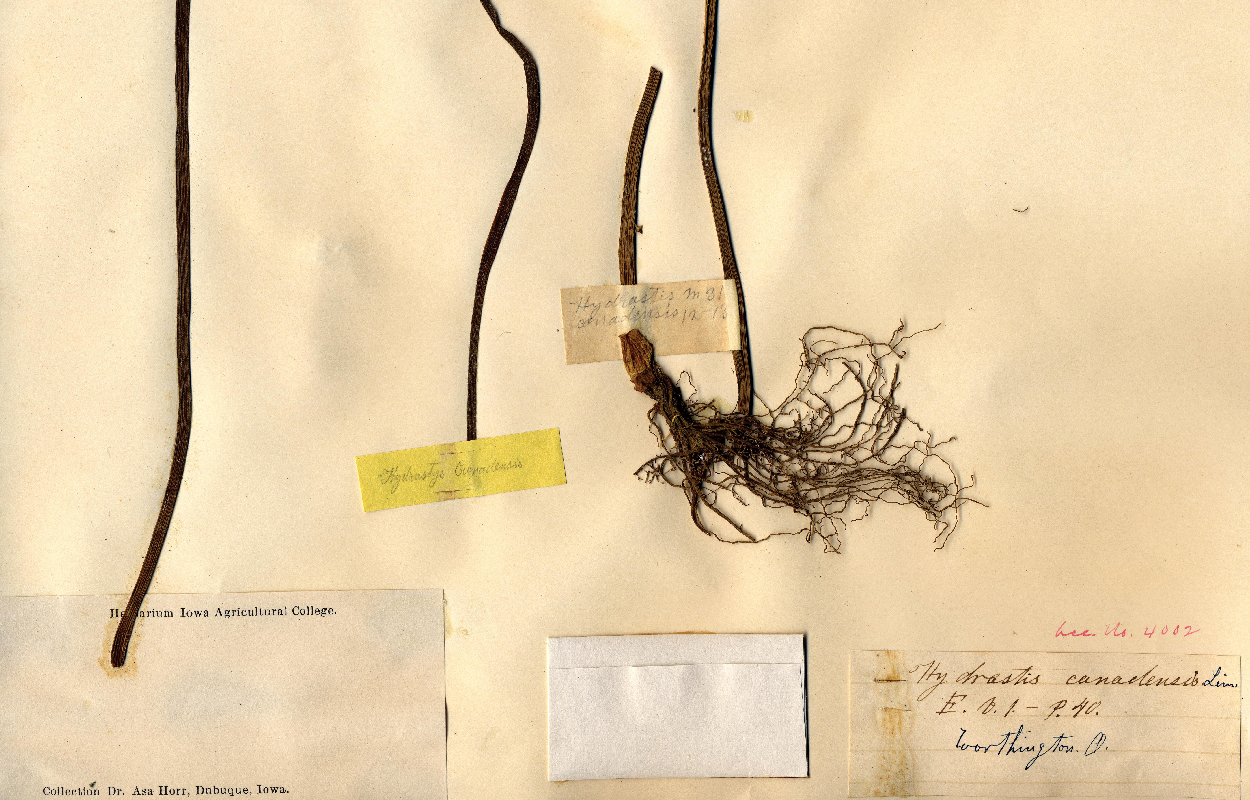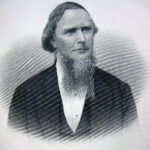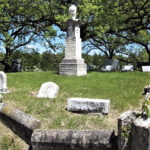Everyone likes to talk about the weather. Some even spend an inordinate amount of time complaining about it, especially when the snow flies and the temperature plummets. But in early Dubuque, no one was more interested in the details of the daily weather and recording weather statistics than pioneer Dr. Asa Horr.
Asa was born in Worthington, Ohio, on September 2, 1817, one of ten children produced by Dr. Isaac and Nancy Smith Horr. In 1826, the Horr family moved to New York. After Dr. Isaac’s untimely death at the age of forty-one in 1827, the family broke up, and the children were sent away to be cared for by others. Young Asa went to Canada where he worked as a farmer and later as a carpenter, laboring alongside his brother and his brother’s employees to build a large flouring mill and other structures.
A devastating cholera epidemic hit the Horr brothers’ construction workers in 1834-1835. Asa put into practice the home remedies he had learned from his mother to try to help the ailing men, as there was no doctor available. His success in treating the men soon became well known, and others came to him seeking medical assistance.
In 1836, Asa traveled to Ohio and enrolled in Worthington Medical College, graduating two years later. He then practiced medicine for some eight years in Fairfield County, Ohio, and later in Baltimore where he married Eliza Sherman in 1841. Intent on furthering his medical knowledge, Asa entered the medical department of Western Reserve University of Cleveland and earned a degree in 1846.
Dr. Horr and his family arrived in Dubuque, a village of some 2,000 residents, in August 1847, after spending a year tending to residents of Elizabeth, IL during yet another cholera epidemic. Dr. Horr soon set up his Dubuque medical practice at the corner of Fifth and Main Streets.
An avid student of the weather, Dr. Horr joined a meteorological corps of Smithsonian Institute scientists to help “solve the problems of American storms.” Dr. Horr began reporting local weather observations on January 22, 1851. He measured and recorded temperature, humidity, and barometric pressure from his observation point on Main St. Passersby frequently witnessed the doctor standing outside his office, measuring wind speed with his hand in the air. Seven years later, Dr. Horr moved his weather observation center to Ninth and Main where he remained for the next thirteen years, retiring from recording weather observations in 1871.
Soon after Dr. Horr’s retirement from official meteorological observations, President Ulysses S. Grant signed a bill requiring the Secretary of War to establish a government meteorological service. In 1873, the U.S. Army Signal Corps assumed Dubuque’s weather observations. However, those official records can’t compare to the newsy reports previously posted to the Commissioner of Patents and the Smithsonian by Dr. Horr. His notations, along with the weather statistics, included comments about the depth of river ice, bird migrations, and the success of fall harvests in the area.
While a major portion of Dr. Horr’s focus was on medicine and the weather, he was a man of many interests. He was enthralled with all the sciences including botany, geology, and astronomy along with the workings of Dubuque’s Town Clock. It was Dr. Horr who spearheaded a campaign to raise money for Dubuque’s first town clock. After the clock was finally erected in November 1864, Dubuquers relied on Dr. Horr, the “Town Clock Superintendent,” to ensure the clock’s accuracy.
The same year the Town Clock began keeping time, Dr. Horr built a private astronomical observatory in the rear of his Main St. office and was the first to determine the City’s official longitude. He delighted in welcoming visitors to his observatory in the wee small hours of the morning to peer through his telescope and observe the planets. James O. Crosby, one of three partners who built Elkader’s Motor Mill, wrote, “At 3:00 a.m., while Saturn crossed the object lens of the telescope, we each had time for a good look at the planet in a clear sky, with its rings bright and plainly to be seen. [When] daylight obscured the stars, we left the observatory and in the office took up the microscope and played with it until breakfast time.”
Dr. Horr also assembled an extensive chemical, medical, and history library as well as a large collection of geological and plant specimens. Many of Dr. Horr’s specimens now can be found in various departments at Iowa State University and the University of Iowa. In 1894, he donated his large collection of historical documents, including the state papers of Thomas Jefferson’s time, to the Historical Department of Iowa.
Although Dr. Horr was noted as an outstanding physician and surgeon, he was unable to prevent his wife’s death in 1866. While the couples’ two older children, Augusta and Edward, were old enough to be on their own, ten-year-old May still required a mother’s care. Two years after his first wife’s death, Dr. Horr married Mrs. Emma F. Webber who died in 1879. In 1880, he married Mrs. Ellen S. Booth.
Dr. Asa Horr died at his home on June 2, 1896, of a lingering illness he was neither able to diagnose nor cure. At the time of his death, Dr. Horr was the oldest medical practitioner in Dubuque, a Knight Templar Mason, a member and past president of the Dubuque Medical Society, and a member of the American Association for the Advancement of Science and the Iowa Institute of Science and Arts, an institution which he had helped establish.
This article is part of the Shades of Dubuque series, sponsored by Trappist Caskets, hand-made and blessed by the monks at New Melleray Abbey.







Comment here